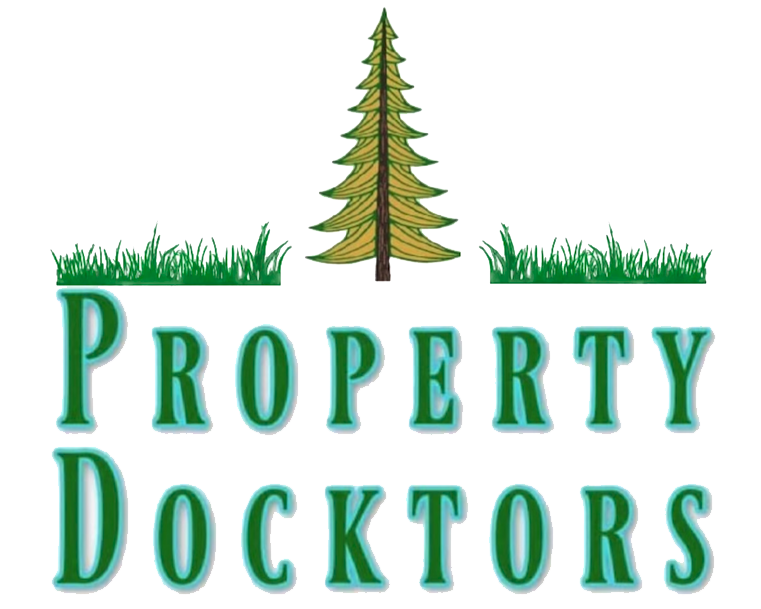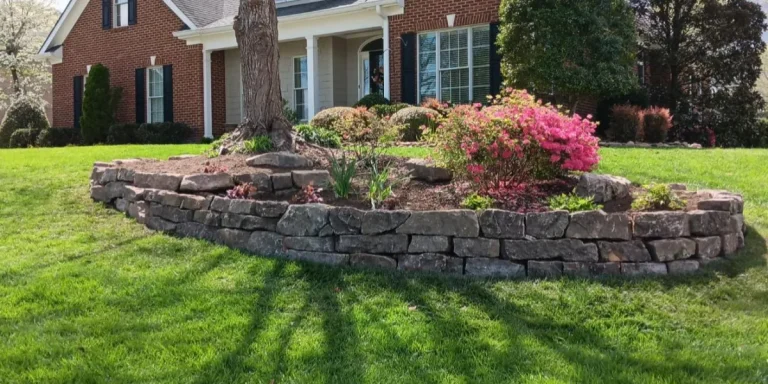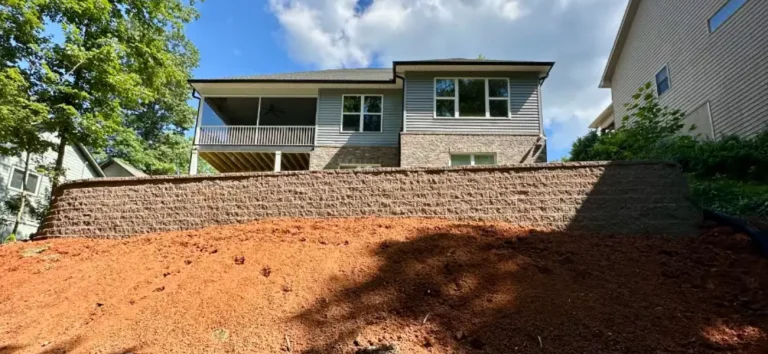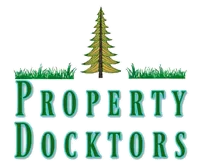How Proper Drainage Impacts the Lifespan of Your Retaining Wall

A retaining wall is more than just a functional structure—it’s an investment in the safety, stability, and value of your landscape. But even the most solidly built retaining wall can fail prematurely if one crucial element is overlooked: proper drainage.
At Property Docktors Landscaping, we’ve seen how improper drainage can lead to expensive repairs or full replacement. In this post, we’ll explain why drainage is essential, how we incorporate it into our builds, and how it protects your investment—especially in the sloped terrain and heavy rainfall common around Lenoir City, Tennessee.
Why drainage is essential for retaining walls
Retaining walls are built to solve real problems—controlling erosion, supporting slopes, and creating flat, usable spaces in hilly landscapes. But one hidden threat can undermine even the most solid wall: poor drainage.
Most homeowners in Lenoir City and East Tennessee know their wall needs to be strong. But strength alone isn’t enough. The real danger often lies in what’s happening behind the wall—specifically, hydrostatic pressure.
What is hydrostatic pressure?
Hydrostatic pressure is the force of water building up behind the retaining wall. This happens every time it rains, snow melts, or water flows downhill toward the wall. If there’s no way for that water to drain out, it accumulates behind the structure and puts pressure on it from the backside—sometimes hundreds of pounds per square foot.
Over time, that constant pressure can cause even a well-built wall to shift, bulge, or fail completely.
What happens when drainage is ignored?
Here are the most common signs of poor drainage behind a retaining wall:
-
- Cracked or bulging wall faces – As water pressure increases, it pushes against the blocks or stones, causing them to separate or curve outward.
- Leaning or collapsing walls – A wall that’s tilting is almost always a sign of water buildup or a failed base.
- Soil erosion and sinkholes – Without proper water management, the soil behind and beneath the wall can wash away, creating dangerous voids.
- Water pooling around the base or foundation – Drainage problems can lead to standing water that damages your lawn, hardscaping, or even your home’s foundation.
- Mold, mildew, and soggy conditions – Excess water in the landscape leads to unhealthy plants, foul odors, and long-term property damage.
Why even a professional-looking wall can fail
It’s easy to assume that a retaining wall built with nice materials and clean lines is structurally sound. But if the builder didn’t install proper drainage features like gravel backfill, weep holes, or a French drain, problems may start to show within just a few years—especially after periods of heavy rain.
At Property Docktors Landscaping, we’ve rebuilt many retaining walls in Lenoir City and nearby areas that were only a few years old but already failing due to poor water management.
Drainage isn’t optional—it’s essential
Whether you’re installing a small garden wall or a large structural retaining wall to hold back a slope, proper drainage is not an add-on. It’s a core part of the design and installation process that protects your investment and ensures your wall stands strong for decades.
How we build retaining walls with proper drainage
At Property Docktors Landscaping, we don’t just build retaining walls—we engineer long-lasting solutions designed to protect your landscape and home. Every retaining wall we install in Lenoir City and surrounding areas includes a thoughtfully designed drainage system. Why? Because no matter how strong or beautiful a wall looks on the outside, it won’t last without proper water management behind it.
We follow proven installation standards—such as those from Unilock—while tailoring our construction methods to suit each property’s slope, soil type, and drainage conditions. That’s how we ensure your wall performs through every season, especially during the heavy rains common in East Tennessee.
What’s included in our retaining wall drainage systems?
We incorporate several key components to protect your wall from hydrostatic pressure and premature failure:
-
- Gravel Backfill
-
- We use clean, angular crushed stone behind the wall—not compacted soil.
- This backfill promotes water flow and reduces pressure buildup.
- It also helps prevent frost damage in winter.
-
- Weep Holes
-
- Small, strategically placed outlets at the bottom of the wall.
- Allow built-up water to drain through the front of the wall.
- Essential for reducing stress on the structure over time.
-
- Perforated Drain Pipe (French Drain)
-
- Installed behind taller or load-bearing walls.
- Collects groundwater and redirects it safely away from the wall.
- Especially useful in areas with poor natural drainage or clay-heavy soils.
-
- Geotextile Fabric
-
- Acts as a filter between the drainage gravel and surrounding soil.
- Prevents soil and sediment from clogging the drainage system.
- Extends the life and effectiveness of the entire wall structure.
-
- Gravel Backfill
These components aren’t upgrades—they’re standard in every retaining wall we build.
Why we prioritize drainage on every project
Many walls we’re called to replace in Lenoir City, Loudon, and surrounding towns were originally built without proper drainage. The result? Cracking, leaning, collapsing structures that become safety hazards and eyesores in just a few short years.
By including drainage in our standard process, we’re able to:
-
- Maximize the structural integrity and longevity of your wall
- Prevent costly erosion, water damage, and landscape disruption
- Deliver a finished product that functions just as well as it looks
Whether we’re building a large retaining wall on a hillside or a decorative garden wall near your patio, our approach never changes—we build it right the first time.
Case example: Rebuilding a failed wall in Loudon, TN
A homeowner in Loudon contacted us after their six-year-old retaining wall started leaning badly. The original builder had skipped drainage entirely. With every storm, water built up behind the wall and pushed it out of alignment.
We removed the failing wall, corrected the slope, and rebuilt it with a Unilock block system and full drainage—including a French drain and compacted gravel backfill. The new wall is not only structurally sound but also beautifully integrated into the landscape.
Why budget installs and DIY walls often fail
Many low-cost contractors or DIY kits don’t include a true drainage plan. Without proper grading, drainage pipe, and base prep, even the best materials won’t protect against water pressure.
It may not be obvious right away, but over time, you’ll likely face cracking, leaning, or total failure. Fixing or replacing a failed wall is always more expensive than building it right from the start.
At Property Docktors, we never cut corners—especially when it comes to drainage. Our goal is to give you a retaining wall that performs as well as it looks.
What sets our retaining walls apart in East Tennessee
At Property Docktors Landscaping, our retaining walls are designed to do more than just look good—they’re built to solve real, long-term problems and add meaningful value to your property. Whether you’re dealing with a steep, eroding slope, poor drainage, or the need for more usable space in your yard, we create solutions that are both functional and visually appealing.
Our team has decades of hands-on experience working with the unique soil conditions and elevation changes found throughout Lenoir City, Loudon, Farragut, Maryville, and surrounding East Tennessee communities. We understand the importance of not just designing a wall, but engineering one that will hold up against seasonal rainfall, clay-heavy soils, and shifting terrain.
Our retaining wall specialties include:
-
- Structural retaining walls
For hillside stabilization, slope management, and load-bearing applications that require strength and precision. - Tiered retaining wall systems
Ideal for large sloped yards where multiple levels are needed for planting beds, walkways, or outdoor features. - Garden walls and raised planters
Great for homeowners looking to add dimension, texture, or defined planting zones to their landscape. - Decorative stone or paver walls
Enhance outdoor aesthetics with walls that complement patios, walkways, and seating areas using high-quality materials like Unilock. - Drainage and erosion control systems
Built into every wall we construct to protect against hydrostatic pressure, soil washout, and long-term water damage.
- Structural retaining walls
We don’t believe in cookie-cutter landscaping. Every project is tailored to your property’s layout, your goals, and the local conditions that affect performance. From the base preparation to the final block, we handle every detail with craftsmanship and care.
When you hire Property Docktors Landscaping, you’re not just getting a pretty wall—you’re getting a professionally engineered solution designed to last for decades, backed by local expertise and a reputation for quality.
Proudly serving homeowners across East Tennessee
Property Docktors Landscaping provides expert retaining wall installation and full-service landscaping in:
-
- Lenoir City
- Loudon
- Farragut
- Oak Ridge
- Maryville
- Kingston
- Tellico Village
- And surrounding East Tennessee areas
Get a retaining wall that’s built to last
Let’s protect your yard—and your investment
If you’re dealing with slope issues, erosion, or standing water, don’t wait for the problem to get worse. Property Docktors Landscaping is ready to design and install a retaining wall with the drainage systems needed to last for decades.
Call us today or request an estimate online to schedule your consultation. We proudly serve Lenoir City and surrounding East Tennessee communities with expert landscaping and hardscaping solutions.



